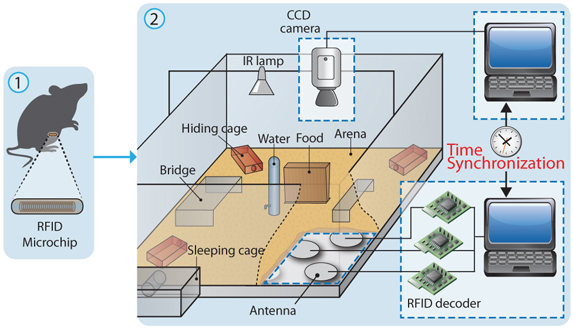What does it take to be a leader? It turns out you have to be somewhat social. At least that's one possible takeaway from a mouse study conducted by neurobiology researchers in Israel's Weizmann Institute.
The researchers monitored the social behavior of mice by filming them "Big Brother" style. What they discovered about the development of social hierarchies may shed light on human as well as mouse behavior.
"Social behavior has a key role in animal survival across species, ranging from insects to primates and humans," the researchers wrote in their study's abstract. "However, the biological mechanisms driving natural interactions between multiple animals, over long-term periods, are poorly studied and remain elusive."

Schematic depicting the “mouse house” project. From the Weizmann Institute
For the study, the mice were implanted with tracking chips, and filmed day and night while living in a "house" (a four-meter-square pen) with other mice – check out the video above. Behavioral patterns among groups, pairs, and individuals emerged.
With varied personality types inside the "house," the mice eventually bowed down to a dominant leader in just 24 hours, Popular Science reported. By that point, they even developed a social hierarchy based on personality type.
This social structure was observed among "normal" and again among "social" mice. But here's where it gets interesting: when the researchers conducted a similar experiment with the "shy" or "autistic-like" mice, either no leader emerged or, if one did, that leader was quickly overthrown.
This research was published online on June 17, 2013 in the journal Nature.
Click here for article.
